
South Australian Medical Heritage Society Inc
Website for the Virtual Museum
Home
Coming meetings
Past meetings
About the Society
Main Galleries
Medicine
Surgery
Anaesthesia
X-rays
Hospitals,other organisations
Individuals of note
Small Galleries
Ethnic medicine
- Aboriginal
- Chinese
- Mediterran
Contents of GPs Medical Bags
[See also the page labelled "Surgeons Bags and Instruments"]
ACKNOWLEDGMENT: The following items were photographed by Dr. Richard Bowering. They are part of his extensive collection of medical memorabilia and represent some of the contents of medical bags in the mid 20th. century. In addition to the items shown the bag contained prescription bags, bandages and dressings, tongue depressors and starter packs of various drugs for pain relief or acute medical conditions. Special containers were used to transport blood samples to the laboratory.
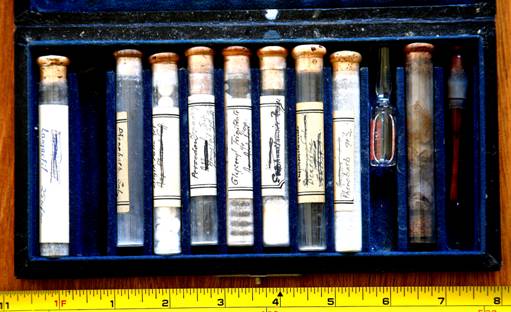
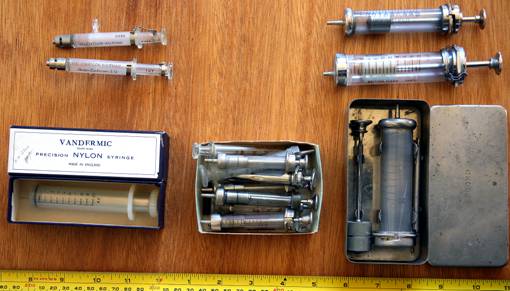
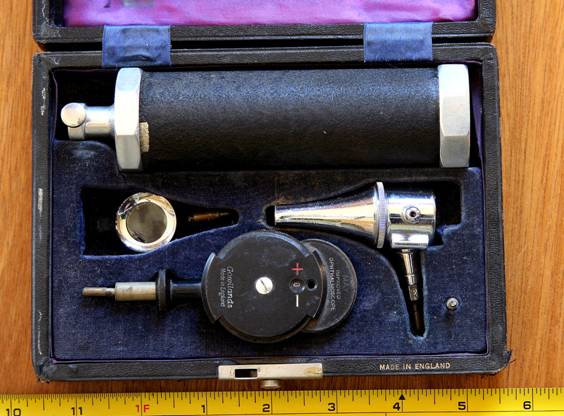 Opthalmoscope and Auriscope. The opthalmoscope was used to view the retina and eye structures while the auriscope was used to view the ear drum. the battery powered light source could be used to view the oral cavity and tonsils
Opthalmoscope and Auriscope. The opthalmoscope was used to view the retina and eye structures while the auriscope was used to view the ear drum. the battery powered light source could be used to view the oral cavity and tonsils
.
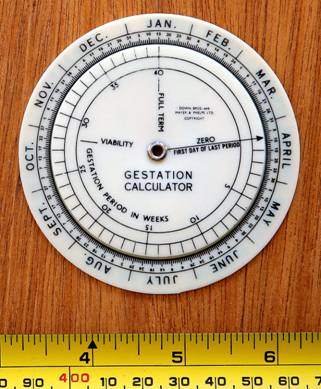
Gestation calculator, had a rotating disc and calculated the viability date, and anticipated delivery date.
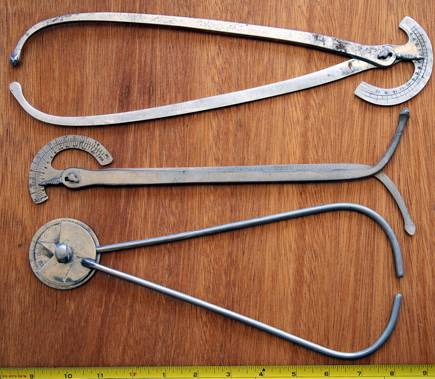
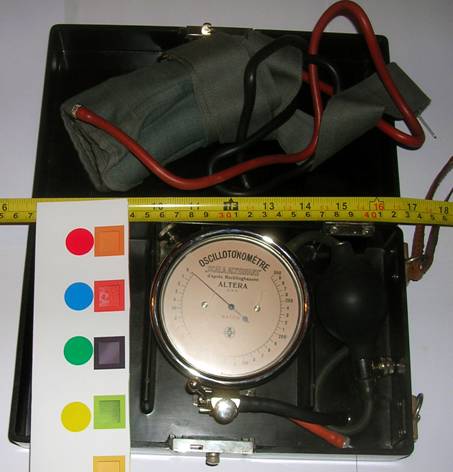
Sphygmanometer used to measure the blood pressure.
An aneroid model is shown. It had a double cuff and could record pressure without a stethoscope.
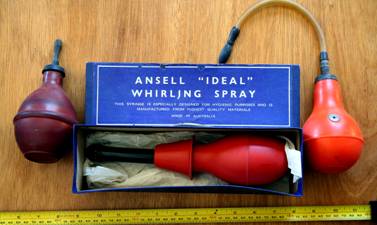
Insuffation bulb and nozzles; used to instill powder or fluid into wounds or body cavities
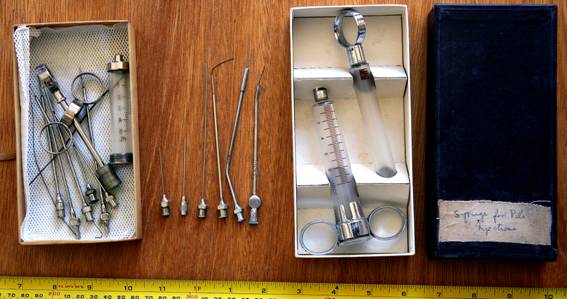
Haemorrhoid injection syringe: usually used in the surgery but patients in nursing homes and patients confined to home were also treated.
The syringe was filled with a sclerosing agent usually phenol in almond oil and a small volume (about 2cc) was injected into the haemorrhoid. The needles had a narrow final 1.5 cm to prevent over penetration.
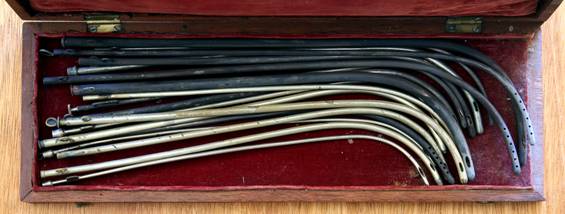 Metal urinary catheters: before prostatectomy became possible, acute retention of urine was treated by catheter-isation. If a rubber catheter could not pass the enlarged prostate metal catheters were used; some had obturators to maintain patency (left hand side of box).
Metal urinary catheters: before prostatectomy became possible, acute retention of urine was treated by catheter-isation. If a rubber catheter could not pass the enlarged prostate metal catheters were used; some had obturators to maintain patency (left hand side of box).
-o0o-